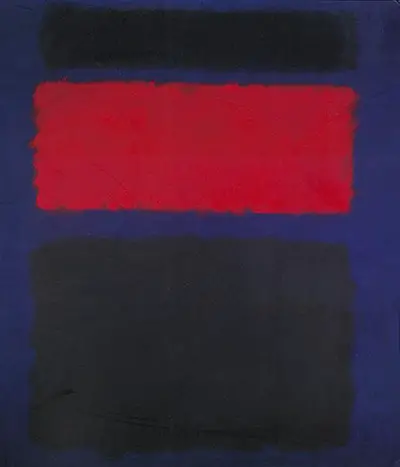Rothko would develop an artistic approach which became known as Color Field and here we find an example of that. He would set up huge canvases that would be designed to stretch beyond the boundaries of the viewer. This gave an emotional impact to them when seeing these paintings, as their entire focus would be dominated by a series of carefully thought out colours and shapes. Those unable to see these items in person will find it much harder to imagine the impact delivered by these works, but thankfully many of his works are to be found today in major art galleries and museums all across the US and beyond. It would also be impossible to a single gallery to display all of them together, because of their size, and so it is entirely suitable that they have become just as dispersed as they have. Rothko remains considered one of the most important 20th century artists within western art and playing a particularly important role in the rise of American art, which for many years had been living in the shadows of its European brothers.
In front of us here we see four main regions of colour, with two blocks of black paint separated by an expanse of red in between. These three shapes then leave a gap towards the edges of the canvas which allows the blue background to then show in from behind. Rothko tried out the idea of shapes meeting the edges sometimes, but generally would work in the manner found within Cubierta, where a more relaxed spacing allowed each item to breathe more comfortably. By 1960, the date of this piece, he had also tried many different variations within this new way of working and so was moving towards a prefered route which would eventually become his default method. You will see many alternative ways earlier in his career, such as with vertical stripes and also great variations in the number of shapes used and also in the colours of each of them.
He would become one of the most respected and innovative artists of his century and really helped to give American art a greater level of integrity and respect from an international audience. New York and other cities across the US were now being seen as leading the way for the first time, leading more and more Europeans to cross over to learn more about some of these exciting new ideas. This marked a key moment in western art but also brought about significant changes in the styles being used, with tradition being relegated to history and these new methods starting to be accepted into the mainstream for the first time, although that was a slow process which continued to meet barriers from time to time.

